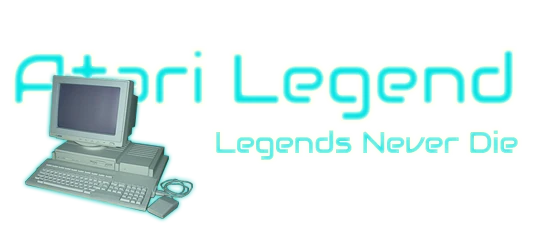

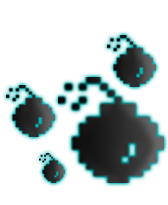





Miles and Patrick Lord are two self taught game creators. Born in the 70's, they grew up with Sinclair machines and of course the Atari ST. They started to hack games on the mighty ZX Spectrum before dabbling into 16bit assembler. On the Atari, they created the amazing Droid. But it didn't end there. If you want to know more about the history of one of the best free games ever to grace an ST Format coverdisc, look no further.
There is currently no profile available in our database
1) Introduction
2) Computing history
3) Becoming a programmer
4) The graphics artist
5) Droid
6) Art programs & squared paper
7) The release of Droid
8) Droid SE
9) Spiral Mile
10) The sequel
11) Graveyard - the unplayable game
12) Hoog. Personal Masterpiece
13) Discussing game ideas
14) Professional lives
15) The Atari ST
16) Gamers today?
17) The Atari scene
18) Idols
19) Words of wisdom
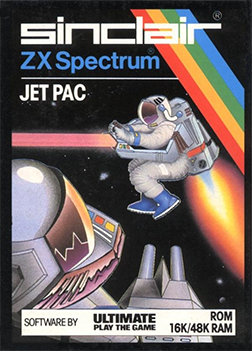
Jet Pac was one of the best selling games of Ultimate, the company that would later be turned into Rare.

Lots of things happened on squared Rhodia paper. The animation of the Droid was designed on these...
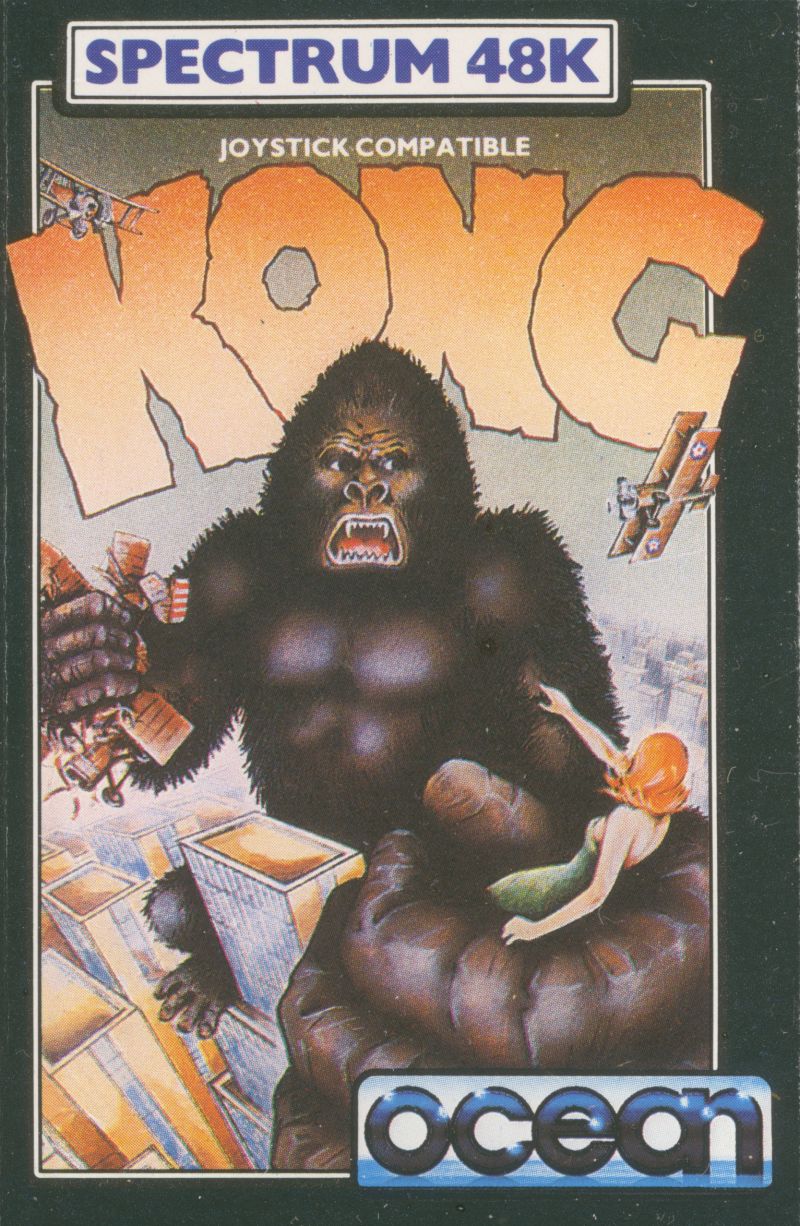
"we lived opposite a family who's eldest son was the author of 'Kong' by Ocean Games for the ZX Spectrum. I never met him though - he was a lot older and had moved away."
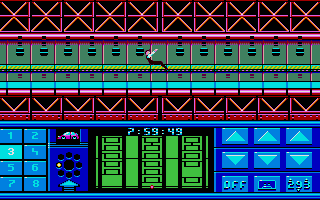
Patrick always wanted to make a game with a realistically walking robot ever since he saw the animation of the main character in the game Impossible Mission. The screenshot here is from Impossible Mission 2.
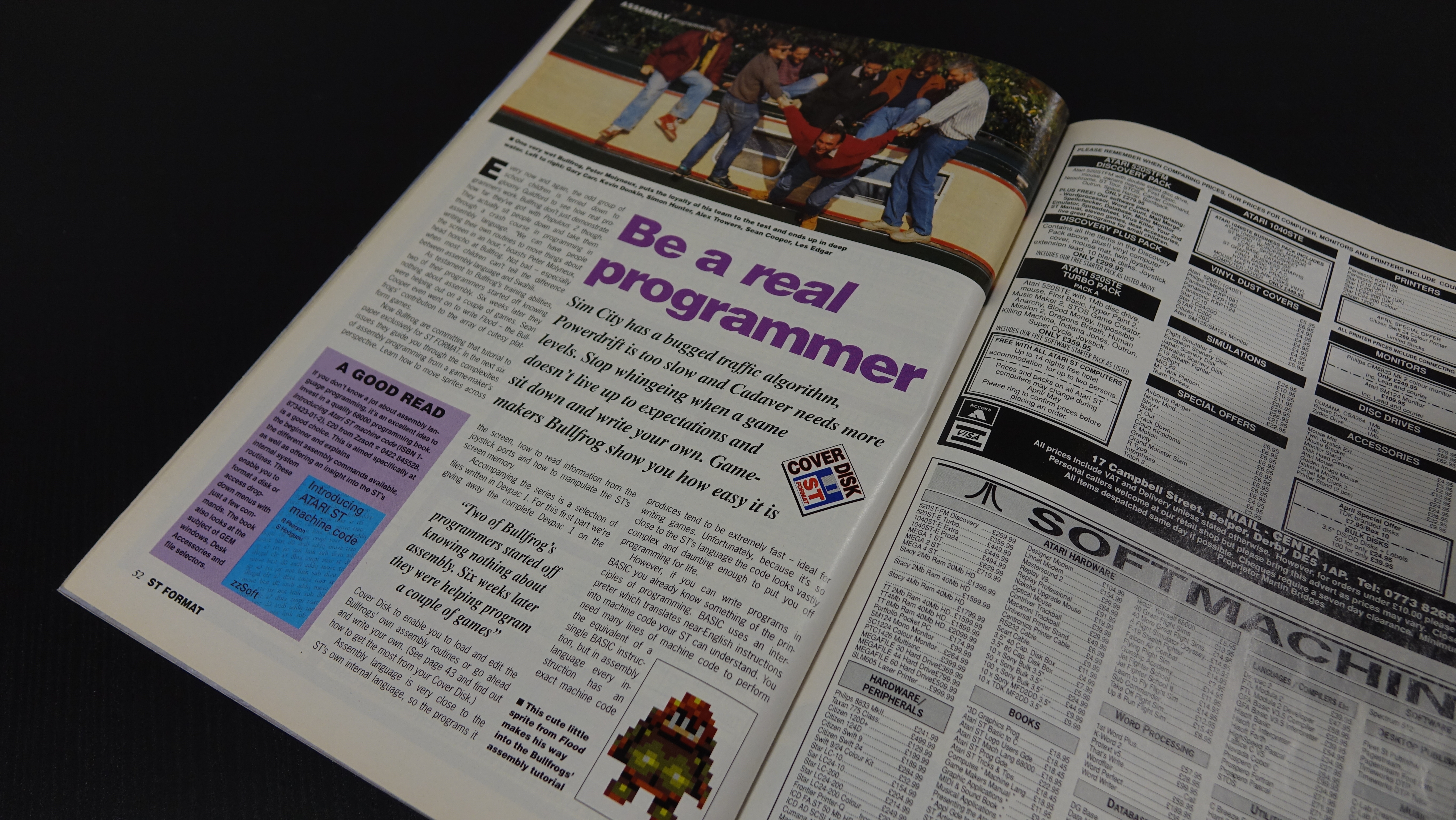
In ST Format issue 22, Bullfrog shared their sprite drawing routines. This was a defining moment for Miles.
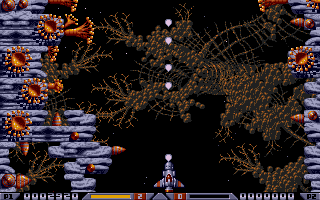
The idea of adding a big gun to Droid came from the megablast in the Bitmap Brothers classic Xenon 2.
1) Can you introduce yourself to the people who haven’t heard from you?
P: Hi I was total computer nerd from the age of 10 until I went to university. Then I started work in IT consulting, followed by working in various software startups and now I’m in Venture Capital. I moved to Paris, France in 2005 with my French wife and have two kids, one of whom really loves video games and Magic: The Gathering.
M: My early years consisted of a mix of being totally absorbed with computers, Fighting Fantasy books, Warhammer, playing piano, and engaging in potentially life-shortening activities involving rope swings, canal crossings, railway lines, local quarries and venturing far further from home in a day than parents would be comfortable with on our bikes. Despite my computer experience I studied Physics at University, started my career with IBM, and the rest is on Linked In. I met my wife while working at a client site, and have two 'adult children' who are now the same age as Patrick and I were when I wrote the series of Atari ST games.
2) What is your history with computers? What was your first computer and when did the Atari ST come in the picture?
P: Our first computer was a ZX81 brought home by my dad when I was 10. I was captivated by it, the seemingly endless possibilities of what it could be made to do. Passing via the obligatory 16k ram pack that wobbled and crashed the computer, and the shift key getting so squashed we had to press it with a small implement in the bottom left corner to get it to work, we upgraded to a ZX Spectrum. Amongst others, the Ultimate games played in turns with friends were the ‘Fortnite’ of our generation. We 'upgraded' to an Acorn Electron, which none of our friends had, and on which my brother and I started to learn machine code programming. Of course there were no libraries and you had to build literally everything yourself from routines that print sprites to scrolling backgrounds and stacks to handle multiple enemies and bullets flying round the screen. It was like a huge puzzle that was very satisfying to conquer. But we got very frustrated by the limited processing power. We got the Atari ST as soon as it came out and it was liberating to have so much more power at our fingertips. Of course we quickly came up against those limits again. Only Miles got all the way to fully mastering it and squeezing the last ounce of processing power out of it.
M: We were born in the perfect decade (the 70's) to start with home computers from the beginning of the boom. My dad brought home a ZX81 first, then we went through about 5-7 Spectrums (the first 3 had manufacturing faults), an Acorn Electron, a Sinclair QL, then ultimately the Atari ST. If anyone remembers going in to WH Smiths when the ZX81 came out, my brother and I were those 7-10 year olds writing those scrolling text programs:
10 PRINT "I AM ACE <some weird characters>";
20 GOTO 10.
Those who know, realise the importance of the ; at the end of line 10. I remember we wore the membrane keypad of our ZX81 down so much we had to use the tip of a 3.5mm headphone jack to apply specific pressure to get one of the keys to work (probably J [LOAD] or P [PRINT] ). We ordered some of the best games via mail order - Fungaloids was a classic.
The ZX Spectrum was honestly an incredible machine, along with the Ultimate series of games - JetPac, Atic Atac etc. Our cousin had Manic Miner, and that completely took over my mind. I cannot imagine how many times I played it, but I did complete the original version, and I think even now I'd be able to describe every level from memory.
The Acorn Electron despite being basically crap compared to the BBC, was actually still a great machine. Elite was the ultimate game of that era, and I realised the potential of procedurally generated worlds, fractals, and 3D. I have to say, we were both utterly addicted to the Repton series. So much so, that my brother drew out (on Rhodia squared paper pads that we bought cheap in France on holidays) all the Repton level maps. Patrick was SO good at this game. I recall, there was a prize on offer to the first person who could complete the game. One night (after weeks of preparation) he played it while I watched, for maybe three or more hours, all the way up to the last level, where a 'sprite' suddenly came out of nowhere and ended the game at the last moment. We were absolutely gutted, and I don't think we ever played it again. We did get very good at copying game tapes - we had a dual deck stereo system, and learnt that we could play one deck and record on a blank tape on the second deck with the audio routed via a DIN cable. We became quite popular at school for this...
The Sinclair QL looked awesome at the time (but had really flaky 'microdrive tapes'![]() – I spent some time with it, and it prepared me for the Atari ST.
– I spent some time with it, and it prepared me for the Atari ST.
P: Ha ha that reminds me, we also copied ZX Spectrum games this way too. Our initial efforts failed because the audio quality degraded too much, but then we realised that by routing the audio output of the original through the spectrum audio ports, it cleaned up the signal on the way to the second tape and it worked!
3) Miles, when did you start programming? Have you made any games before Droid? If so, what was the first game you have made and on which system?
My first experience of a home computer was the ZX81 at age 7. My dad arrived home with this mysterious black box, powered it on, then my brother and I sat with him while he typed in the program for a basic game. I was hooked, and marvelled at the fact you could create something from nothing. We subscribed to Your Computer magazine, and my brother (3 years older) and I would enter the program code for games. It's hilarious looking back to when we started entering machine code listings. Literally a series of hex → REM 00 00 AF DE 8E etc etc. One character wrong and it doesn't work of course. We'd spend hours on this, usually with me reading and my brother at the keyboard, occasionally switching roles to break the monotony...
With the BASIC programs, when you've typed in enough of them, you see the patterns and learn how the programs are structured, you could see what bits controlled movement, lives, death, walls etc. So we started messing with it (hacking if you like) giving ourselves extra lives, making walls invisible or passable by you not enemies etc. We basically hacked games to our liking and extended their bounds. I think it was Gulp where we first realised we could allow ourselves to go through walls to escape the ghosts. Honestly my brother was the driver, the smart one here. He figured it out, I learnt from him. I absorbed what he did like a sponge at my younger age. He came up with code to take input from the keyboard to move a character around the screen and I memorised it.
Later on when we had the Spectrum, I wanted to know what all the hex characters meant in assembler games - I was taking myself to the local library and borrowing books on programming and assembler - it's nuts to think I was doing this at this age. I'd ask my mum to drop me off, and a few hours later I'd emerge with several books on assembler or maths algorithms. Honestly I still didn't get too far with the ZX Spectrum with programming, however I still think the games were some of the best of any of the home computers.
Fun fact - we lived opposite a family whose eldest son was the author of Kong by Ocean for the ZX Spectrum. I never met him though - he was a lot older and had moved away.
Assembler finally clicked for me with the Acorn Electron. To me it was incredible that Acorn included a native compiler inside the BASIC language so you could just write assembler and compile it without needing more software. I borrowed books which laid out the instruction sets, and memory map of the machine, and I figured out how to break the 'copy lock' on AcornSoft games. I wrote my first terrible game for the Electron, where a character on the left of the screen would have to fire arrows at 'devils rising from a pit of fire'.
Then my dad bought the Sinclair QL (to be his business PC!). I was intrigued by the difference in 8-bit vs 16-bit assembler. This was a 68008 chip, 16-bit Motorola (but 8-bit bus aargh so slow). However the QL did not have a built-in compiler. I'm going to say it, I actually did hand code assembler - i.e. I wrote on paper the instructions I wanted, then looked them up in a reference book to create the binary, then convert to hex. There were 'assembler A4 pads' you could buy to help with this. I wrote a few small programs like that. It was hard work.
The QL set me up for the ST - 68000 chip, I was ready to start writing 'real games', or so I thought.
4) Patrick, you are credited for the graphics on some of the games. Have you done any programming? And why did you want to do the graphical side of things?
P: I wrote a number of relatively simple games for the Electron, and started writing games for the ST but never managed to finish them. I was also using the ST to do MIDI music, thanks to its built-in MIDI interface, which diverted my attention. At the same time, Miles was getting better at programming than me and so I contented myself with dreaming up and discussing ideas with him and doing the graphics.
M: I'd like to add - at this time we were heavily into Games Workshop and lead miniatures - and Patrick was painting these things using all the advanced dry-brushing techniques to get chainmail looking metallic and glistening - he was a master at this. I sincerely hope he still has some of the models he painted. So while he was painting these figures, I was writing code, or we were talking about music and Cubase on the ST.
5) Let’s talk about Droid. This was your first game on the ST? How old were you when you made it? Can you tell us a bit about the history of the project? What do you still remember? Where did the idea come from? In what language was it programmed? What were the biggest challenges about this project?
P: The whole idea came from wanting to do a cool walking robot. I loved the way the guy in the Impossible Mission platform game could jump and roll and it looked pretty realistic to me, so I wanted to do the same kind of thing to create a believable walking robot. The rest of the ideas came about from a mish-mash of the best bits of games we already loved. The concepts of doors with keys, passages from one part of the maze to another, and all the different weapons. The bouncing bombs was an idea I'd wanted to do for a long time and we finally got to realise it in this game!
Re the language, the only way to write responsive and playable games was to code it directly in M68000 machine code.
Miles can surely give you more detail. I was living away at university from 89-91, I no longer coded, I had a crazy social life to keep up with! So Miles, who was still in sixth form, did the hard work developing this game himself!!
M: Age 17. I'd spent ages writing my own sprite routines in assembler (using DevPac now), trying to draw sprites at any position on a coordinate system, and while it overall worked, it just wasn't very fast. But the defining moment was when Bullfrog (of Flood fame) shared their sprite drawing routines on the ST Format cover disk (I think #22), and it blew me away. Not only the sheer speed, but the realisation of how it worked - macro code expansion. It taught me that for sheer speed, you need to eliminate loop counters. Don't loop 32 times to draw each line of a sprite, repeat the code literally 32 times. Having a counter register, decreasing it each loop and branching back to the start of the loop takes too many clock cycles! Coming from a history of limited memory of previous home computers where space was all important, it didn't occur to me this was no longer a problem on the ST - we had too much memory available!
I built a prototype game using the Droid graphics Patrick had created (to create the robot which could jump around the screen and land on platforms). I used ideas from a game he had written called 'Xyro' which had top-down tiled map rendering and collision detection, and I applied it to a vertical scrolling map with platforms. We were heavily inspired by the Xenon series - just phenomenal artwork, and I wanted guns. Lots of guns. The large laser turret idea comes straight from Xenon II, and I wanted the 'Megablast' add-on equivalent for our Droid.
Fun fact: We were deciding what to call the game, and being quite daft we came up with 'Vividly Coloured Skin'. Of course the name didn't stick - but if you look in the game files you might find a file called VIVSCR.NEO
6) Patrick : Which tools did you use to create the graphics?
P: I used cardboard and lots of squared paper (we used to go to holiday in France every year and go crazy buying those orange Rhodia squared paper pads cheaply in the French supermarkets!). I cut out the shape of the robot's body and the pieces of its legs (thighs, calves, feet) and fixed them all together with pins at the joints. I could then move the legs into any formation and capture each stage of the walking by tracing the outlines onto the square paper. This ensured a natural look, for example I tilted the front of each foot down as they lifted off the ground, and I also made the robot's body oscillate up and down as it walked.
The rest of the graphics were also meticulously designed by colouring squares on those Rhodia pads. For the walls and background, I cut each block out and put them next to the others to ensure repeatability and that they fit together smoothly without too obviously looking like a load of square blocks stacked together. I was strongly inspired by the graphics of Xenon and Xenon 2, I loved the stark variations in colour and metallic effects.
M: I just wanted to add that ultimately we drew the final sprites in Rainbird's Advanced OCP Art Studio. Just phenomenal for drawing and animating sprites and exporting them alongside transparency masks.
7) Droid was released for free on ST Format issue 37. How did that came about? And did you ever think of making it a commercial product? Since the game is of such high quality…
M: For me, the game was still rough around the edges and other games were being released with side-scrolling etc by then (Turrican). However I'd always loved ST Format magazine and I just imagined an ultimate goal would be to get it on the cover disk. Having something in print would be an awesome keepsake! I sent the game off to ST Format - they wrote back asking for a phone call, and they offered £200. That was a lot back then at my age. I thought they were doing me a favour as I couldn't wait to see it in an upcoming issue of the magazine. It's a bit shocking to think that was nearly 30 years ago. I do still have a copy of that issue preserved in a box.
8) Last year, Jamie Hamshere (Junosix), released a new version of Droid enhanced for the Atari STe. Are you aware of this and how do you feel about that?
M: Yes, I spoke with Jamie last year and I think he did a fantastic job rebooting it and getting rid of those horrible large numbers at the bottom of the screen (that was originally to speed up the game with less gameplay area to scroll!). On the standard STFM I had to reduce the game space to keep it playable and fill in the rest of the screen with something). I know some of the mechanics changed, for the better, as in the original game the pickups were too random. If you've seen Droid 2 I did get a more optimised stats interface at the bottom of the screen.
I'm amazed that someone would want to spend the time and effort to reboot a game I wrote years ago. I want to thank Jamie personally for his effort here, I love it.
9) You called your developers company 'Spiral Mile’. Why the name? What does it mean?
M: The name came from two things - firstly I had been playing around with 3D code, and knocked together an animated spherical spiral made up of dots which would rotate around on the screen. This was after Droid was released on ST Format - but if you've seen the later PD games I wrote there is the animated spiral on a 'loading screen'. The name came from both this, and yet again, my brother's imagination. He just said to me, why not 'Spiral Mile', as you have the spiral logo, and it's got your name in it if you wrap it round. We both agreed it was quirky but easy to say and it stuck!
10) In 1994 a follow up to Droid was created, but this was never officially released. There is a version available on the net. What can you tell about Droid 2 and why was it never released?
M: I created Droid 2 while at University. I wanted a more expansive map and better effects, and I'd worked hard at writing interrupt-driven multi-channel sample playback code. I had already written some sound sampling and effects software, and I had been writing my own floating point and fast fourier algorithms in 68000. I was just exploring possibilities as a diversion or stress-relief from the Physics degree. I had no idea to actually release it, as the 'magazine / PD' scene was changing rapidly, basically gone - the SNES was out, and it just seemed pointless trying to do anything with it more than challenging myself. There was no internet back then. So I didn't 'release' it until maybe around 2002 when we had ADSL dial-up broadband, and I put together a website where I brought all the games together for nostalgia sake (I think you found it in the archive).
11) Miles : Your games are pretty hard, but the asteroids clone Graveyard is almost unplayable. Are you aware of this?
M: This is hilarious. Yes, it's the most ridiculous game I wrote. Honestly, my parents went away on a two-week holiday. So home alone, I fuelled up on whisky and tried to write a Sinistar clone - but I found the gameplay too easy so I kept ramping up the difficulty to challenge myself. All other games I painstakingly play tested. This one escaped more as a memory of what I was feeling at that time. I didn't want to change it, it was my state of mind at that time. Apologies to anyone who tried to play it!!
Fun fact: The 'Sinistar' in this game is the same 'robot guardian' in Droid, 3rd screen in through the door at the top into the second level. I used the sampling software I'd written to record myself yelling 'You're going to die' then apply reverb / echos. I was quite drunk when recording the audio for this game. Apologies to anyone who tried to play this seriously.
12) Miles, let’s talk about your last game, Hoog. This is such a beautiful puzzle platformer, with amazing graphics and parallax scrolling. What can you tell about its history? And how come this wasn’t a commercial release? This is an absolutely fantastic game…
M: Hoog was to me my personal masterpiece. It took 3 years to complete, largely because I was trying out ideas and I kept changing the mechanics of the game.
I wanted to create a space where you could fall large distances and float balloons (and drop rocks - my brother and I spent too much time with Repton). An early version mixed the idea of dropping piles of rocks to create puzzle elements much like Repton - but I later abandoned the idea. My brother and I were always able to discuss ideas and he was always highly creative - we had fun coming up with ways the 'mini-Hoogs' could die - drowning, burning, squashed by rolling rocks (I guess a Lemmings influence). Apologies for the gory pool of blood when a large rock rolls over them...! I learnt that it's the details that count - eg. the fireballs disintegrating into puffs of smoke still travelling into the walls, small air bubbles rising at different rates according to size when under water, and the fact that Hoog holds his nose. Moving platforms were a headache to get right.
Also we were heavily influenced by Bullfrog's Flood - water and that feeling of being submerged seeking air. The water physics in that game were mind-blowing. But I wanted primarily to push the aesthetics. I really wanted to get that ‘arcade feel’ on the ST and it frustrated me that it seemed so easy on the ZX Spectrum, but not on such an apparently more powerful machine like the ST. Parallax scrolling and colourful levels. I knew it had to be possible, again by looking at Xenon II. They were some seriously smart developers.
I'd learnt how to use the VSync interrupt to change the background colour palette on each tv scan line, plus I figured out how to write clock-cycle timing code to measure performance of my routines and optimise them to get the last ounce of speed. I tried literally every assembler command to figure out which was best for which task, and learned that MOVEM was the way to go using all registers to bulk move data - the whole screen is rendered in one block of code, applying all three levels of parallax in one go with masking. The third level is fake - it's a grid of two alternate pixel colours on the middle level ‘space’ which is colour switched on vsync lines to make it look static and achieve dithered blending between the raw colours. For the foreground I kept an index of which map blocks had transparency and had a different sequence to render than those without - the majority of the blocks are either completely opaque or open space, but some platforms and the decorations have transparency to add to the illusion of full screen masking - all code expanded to eliminate loop counters. Sprites are then drawn on top.
The three islands came about from Rainbow Islands where you have to progress through a series of themed landscapes. You'll notice that I reused some of the Droid rock and platform graphics in the middle 'Night Land' levels. As it was night, I needed something else to keep the illusion of parallax so added a single moon sprite and some single pixel stars which had to be drawn behind the 'middle layer', which was interesting given the backdrop is a cheat. I may have actually inverse masked it from the background to then only draw the 'visible' parts afterwards on top of the background.
I know the music is damn irritating, but at the time I liked it and thought it was good enough. Given I needed as much CPU power as possible for drawing the screen fast, I couldn't find a way to have both that and sampled sound effects playing, so in fact there are no sound effects, hence why you can't turn off the music!
After completing the game, I felt that it had to be made available somewhere and put it into public domain. A few months later a guy from Atari World contacted me telling me he'd written a review in the PD section of the magazine - I had a copy of this magazine but can no longer find it.
13) Patrick, you were not involved in Hoog and Graveyard? Why?
P: Miles had started learning programming at the same time as me, but quickly overtook me and was by far the better programmer. He really stretched the ST to its limits. He also had a knack of actually finishing the games he started ! In the meantime, I was getting more interested in making electronic music and then I went to university ...
Although I no longer coded, I still loved discussing game ideas with Miles and he came up with the Hoog concept inspired originally by Bullfrog's Flood, which we thought was absolutely awesome. We loved the concept of caverns filled with water. Like Flood, the player has to get out. But we decided to make it more difficult by also having to get a load of other furry friends (mini Hoogs) out as well, and so we came up with this mechanic of 1) you can't control them directly, they will walk into a pool and drown or burn up in a fire pit. 2) you can, however, attach them to helium ballons to stop them walking but then the ballons rise and you have to try to guide them out without popping the balloon. It allowed us to add a strong strategy / puzzle element to the game. Apart from brainstorming ideas with Miles, I did nothing else and he developed the whole game by himself!
14) When looking at your LinkedIn profile pages, you both seem to have stopped making games. Did you never think about getting back into the games industry?
P: For me, truly I never thought about getting into the games industry. I was less proficient than Miles in the coding. It was a passionate interest at the time that just kind of faded away as other perspectives in life opened up.
M: I always thought of writing games as a possible career, in fact as a backup. I remember looking for jobs involving 68000 programming just in case, but it was quickly forgotten when IBM offered me a job. That said, we didn't completely abandon games.
My brother bought me an original US Robotics Palm Pilot – to my complete surprise it also used a 68000 chip. I started writing a ‘Bugaboo’ reboot on this, but never finished it. Both of us then bought the Compaq IPAQ.
In 2003 there was a sudden viral interest in Sudoku, everyone was playing this puzzle while commuting into work - and Patrick (yet again on the ball) suggested I write a Sudoku app for the IPAQ. This took off. Between us we released a game called 'Sudoku Rules Extreme!' under the 'Spiral Mile' label. Microsoft released IDE’s specifically for Windows CE that only supported C++ code. So I taught myself C++. I wrote code to explain on the game how to solve the board, and used genetic algorithms to generate boards of different levels of complexity and also solve them with explanations. It ended up receiving an award, finalist for ‘Best Sudoku App’.
This is just before smartphones came into existence - the first were Windows CE based (the O2 XDA), then the iPhone was released, and all the Windows CE stuff disappeared. I released a free version onto a Smartphone mag at the time, purely for marketing reasons (another copy in a drawer somewhere now!).
I then wrote a series of puzzle apps including Hitori and Pentago. For Pentago I wrote an AI that I couldn't beat. But I released it with the name Pentoga for copyright / trademark reasons. None of these other games received any interest.
I did also write a version of Droid for the IPAQ! However again, it was a failure – mainly because many devices with different screen sizes and orientations of the directional pad, which was a nightmare to work out without access to all the different PDA models, so most people who tried the game got faulty controls or screen orientation. It was called ‘Droid – The Beginning’ as I had thought I would release new sequels, but as this version had single figure purchases I abandoned the idea.
Around 2011 I started work on a Thrust clone for Android – called ‘Ion Thrust’. It sounds like a really dubious name now! I spent 3 years constantly thinking it would be finished within 6 more weeks and justifying to my family that it would be finished – but it never was. I really wanted to release this in the Google Play Store, but to be honest I just couldn't find the time to create the levels or the sustained interest / variation this would take to become popular. I had all of the physics worked out with vector-style rendering. I won’t go into the details of the performance optimisation of rendering of the filled world polys plus physics wrap-around, that was insane. It was basically a blend of Thrust with the look and feel of Gravitron / Oids. I even created a mini-map render. This was sooo difficult. But probably there was a simpler way to achieve this.
15) What did/do you think of the Atari ST?
P: We loved it, the architecture was cool for developing games. I always felt a little jaded though that the Amigas had a better sound and graphics card, and that we therefore had to work harder to make a good game despite these limitations of the ST.
M: An amazing machine. No hardware sprites, no short cuts - write your own - forces you to learn from principles. MIDI. We made the right choice - we weren't consumer types, we were engineer types and the Atari ST is a playground.
16) Do you still play games today? Are you a game? And if so what is your favorite computer game? Old or/and new.
P: My favourite games are too many to mention. Basically we played all the classics and loved them all. I have particularly fond memories of Manic Miner, the Repton series, Chuckie Egg, Xenon 1&2, Flood ... I don't play games now, my passion (in my limited spare time) is producing electronic music under DigitalGenes.
M: My favourite games were Asteroids (arcade), Pole Position (arcade), Fungaloids (ZX81), Jet-Pac / Atic Atac (Spectrum), Repton / Elite (BBC / Electron), Xenon II / Flood / Barbarian (ST), Donkey Kong Country (SNES), StarFox (SNES). This last one I could and did routinely complete on the hardest route every time I returned home drunk after a night out. One of the best games ever and needs a VR reboot.
My time for playing PC games dwindled long ago, however by far the most compelling game series I've played was Half-Life, with Half-Life 2 being the winner - what an incredible game, where real physics met gaming. I love Alien Isolation and I'm trying to find the time to finish it - but more recently I'm very much into VR. I think the potential is incredible, and the journey is much more accessible now with a certain wire-free device. I've even written a few fragments of code for VR, who knows whether I might come up with something again.
P: Yes of course! Half-Life 2 was also a milestone for me, I could actually imagine being there in that world, it was so compelling. I also loved playing adventure games, such as the Zork series and Monkey Island. My favourite was Grim Fandango, what a great mix of story, interactivity and puzzles that actually made sense and were very satisfying to solve.
17) Are you still in any way involved in the Atari scene today?
P: Not at all I'm afraid. I enjoy perusing the archives from time to time though!
M: I've always enjoyed trying to get ST emulators up and running on my laptop and Android phones. I still want to build a dedicated Linux or Pi-based gaming console I can plug into the TV to play retro games across all old consoles and arcades. I'm a massive fan of the community and, when I get time, I like to look back and see what's going on. I have the mini versions of Commodore 64 / SNES plus Nintendo Switch consoles - plus I've bought any home computers on offer at car boots. I'm a retro fan through and through. My family routinely buys me the latest Pac-man lamps or other nostalgia as stocking fillers every Christmas! My daughter bought me a finely refurbished Nintendo 3DS last Christmas.
18) If you could have a beer with anyone, who would it be and why? (who do you look up to?)
P: Well my passion is now more in electronic music, and there are wealth of people I can think of for that, Deadmau5 for example or Miike Snow or Ulrich Schnauss or Steve Duda ...
M: Vangelis, Nik Kershaw, Matthew Smith, The Bitmap Brothers, David Braben, Carl Cox, anyone working at LHC, been on board the ISS, working in Quantum Computing, AI, Nuclear Fusion. Sadly I'm too late for Steven Hawking. Many more. You for this interview, Jamie for the reboot. And of course always my brother Patrick.
I'd like to take the chance to thank my brother for always being there, I learned so much from him, and I still do. We were so close growing up working on new ideas (computers, music, games) and I always looked up to him and I still do. Some of these games would not have existed if it wasn't for his genius foresight, especially the Sudoku app. I thank him endlessly for his incredible support throughout life. We live in different countries now and I managed to see him just before Covid became a problem - I can't wait for the time we can catch up again.
P: Hey you did all the work really … we both so much wanted to make this Sudoku game a success. I’m still amazed by what Miles managed to develop. I mean, genetic algorithms for automatically generating provably solveable sudoku boards? The ‘solver’ he built could solve any puzzle using all the different techniques and would give clues to help if you got stuck!
19) Any last words of wisdom you like to share with the Atari scene?
P: My nostalgia for those days is still very strong, it was a time of excitement and discovery. I felt we had, ourselves, in our bedroom, the power and freedom to create anything we like. Everyone should remember those feelings and cherish them!
Interestingly, I am reliving to a large extent those same feelings with my music production hobby now. Computing power has advanced to the point where I can create whole tracks just with a laptop in my home studio. Most importantly, I’m creating for the love of creating, I’m not trying to make money or become ‘famous’, I simply do it for the pleasure of creating something new, just like I did when I was a kid.
M: Well. Those who are still interested in the Atari scene, I imagine are still interested as it brings a sense of nostalgia, but also a time of creativity. A time when there was not much else to do but imagine and act on your own initiative to realise your ambitions. So I think we're from a time where you get up, and make something happen.
Today while I fear there are many distractions for our younger generation - consumption of video, social media – there are still new opportunities all the time for entrepreneurial ventures – it’s still there for the taking.
I'd like to thank everyone who has an interest here, for your support, but also for being the type of people who make new things happen through ingenuity and science and technology.
Continue to get up every day and make a difference. The past was awesome, but the present is too - thank you to you all and let's enjoy and share good memories of where we've come from, but also where we're going to.
Thank you both for this fantastic interview.
Check out the video!
August 5, 2025 by grams88
Martin Brownlow is a living legend. Best known among ST fans for creating the beloved PD/shareware classics Grav and Grav 2, his games are still cherished by many to this day. From a young age, Martin knew he wanted to make games for a living...and he made that dream a reality. In fact, he’s still doing it today. Discover the full story and much more in this exciting new interview.
October 4, 2024 by grams88
Stacey Jamieson began his career at DMA Design, working on titles such as Oh No! More Lemmings, Walker, GTA and others. Over the years, he moved on to Electronic Arts (EA), where he contributed to major games like the Star Wars Battlefront series, Mass Effect, and Need for Speed. Today, he is the co-founder of Expression Games, where he continues to pursue his passion for game development. What an exciting career!
July 29, 2024 by grams88
Who doesn't love a good underdog story? Chris Sharp is a noteworthy apprentice of the renowned François Lionet, as he mastered the art of coding with the almighty STOS Basic. Chris crafted a few games for our cherished ST, including fan favourites like Magic Tomb and the Freaked Out series. Intrigued? Dive into our interview to revisit the era when game development could still be a solo endeavour.
July 16, 2024 by grams88
When Sega released its Master System, it came bundled with the game Alex Kid. To this day the game remains very popular, loved by many. One of those people is Terry Lloyd. More so, Alex Kid was the main inspiration for the Atari ST platform classic Axel's Magic Hammer. But that is just one of his many accomplishments. Terry has been around the block. Working as an artist and game designer at the beginning of the 80's for Gremlin Graphics, he then moved on to Core Design, which he helped get off the ground. During the 90's he contributed to founding the company Malibu Interactive. On the Atari ST, Terry's resumé include Dynamite Dux, Car-Vup, Rick Dangerous 1 & 2, Torvak the Warrior, WarZone and many more. Read all about this veteran of the games industry in this exciting interview.
April 18, 2024 by grams88
It doesn't always have to be about computers, coding and graphics. Adrian Powell, the artist behind the original Lemmings game, crafted all its artwork, including box art and promotional materials. His passion for painting lemmings has persisted over time and he is still painting lemmings to this day. Powell's work remains influential and has helped selling millions of copies of this classic (ST) game.
Currently 0 registered users online
In the past 24h there were 2 registered users online